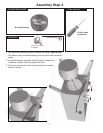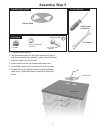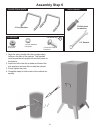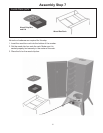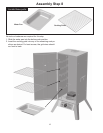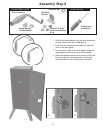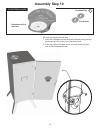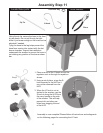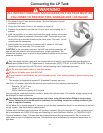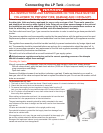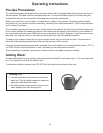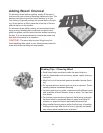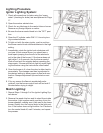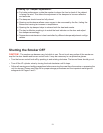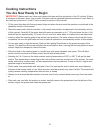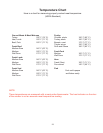Special offers from our partners!

Find Replacement BBQ Parts for 20,308 Models. Repair your BBQ today.
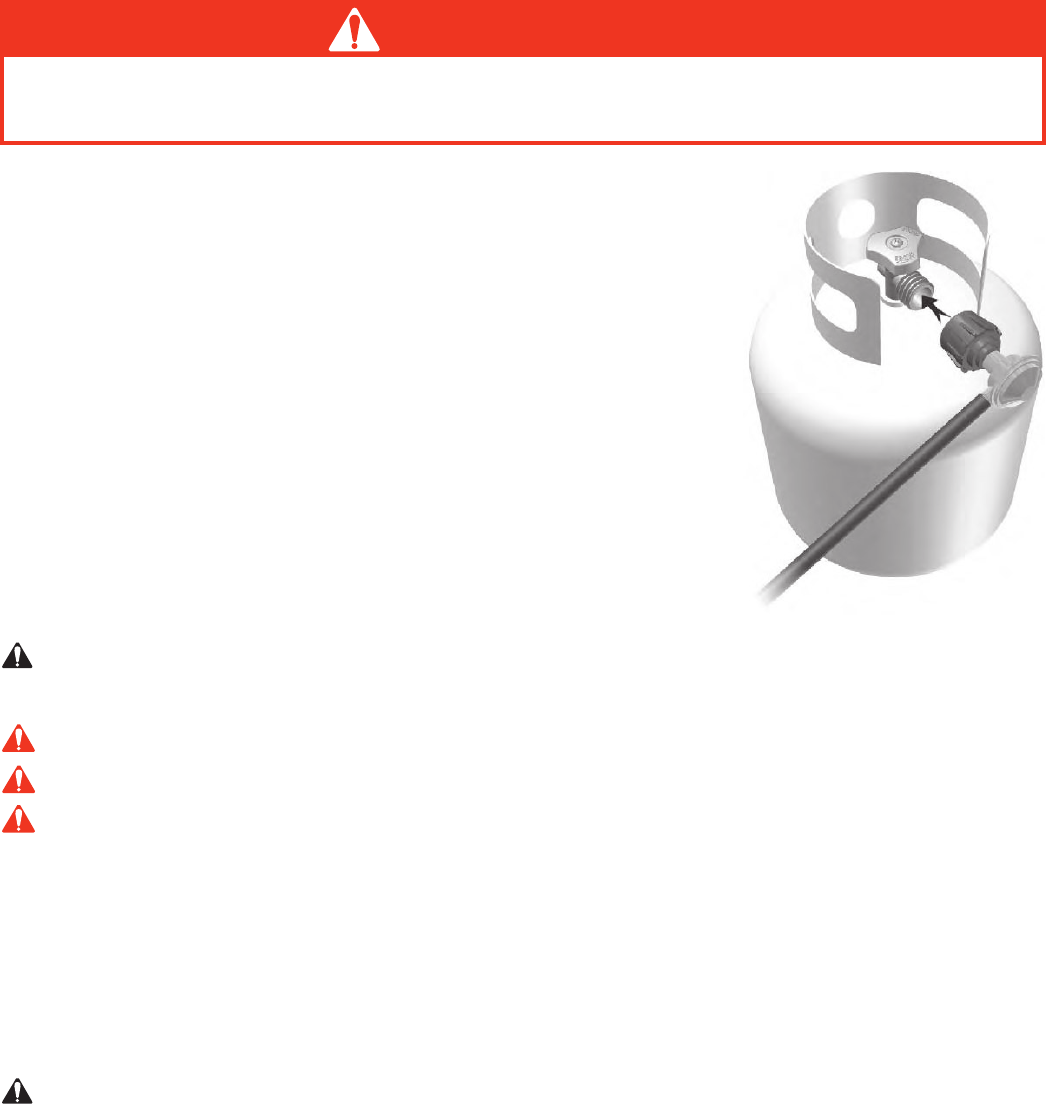
16
ALL INSTRUCTIONS AND SAFEGUARDS ON THIS PAGE MUST BE
FOLLOWED TO PREVENT FIRE, DAMAGE AND / OR INJURY.
WARNING
Connecting the LP Tank
1. The knob on the LP tank must be closed. See that the knob is turned
clockwise to full stop.
2. Check that the control knob on the smoker is turned off.
3. Remove the protective cap from the LP tank valve and coupling nut, if
present.
4. Hold the regulator in one hand and insert the nipple into the valve outlet.
Be sure the nipple is centered in the valve outlet. The coupling nut con
-
nects to the large outside threads on the valve outlet. Use care - do not
cross thread the connection.
5. Hand tighten the coupling nut clockwise until it comes to a full stop.
Firmly tighten by hand only. Do not use tools.
CAUTION: In the connection process, the HVR side of the connection will
seal on the back check in the valve resulting in a slight resistance. The
connection requires about one-half to three-quarters additional turn to com-
plete the connection.
Any fuel supply cylinder used must be constructed and marked in accordance with specifications for
propane cylinder of the U.S. Department of Transportation (DOT) CFR 49, or CAN/CSA B339. The ap-
pliance is to be used only with 20 pound, vertical standing vapor withdrawal type tank.
(A) Do not store tanks under or near the smoker.
(B) Never fill tanks more than 80% full.
If instructions A and B above are not followed exactly, a fire causing death or serious injury may
occur.
This smoker is designed to operate LP (Liquefied Propane) gas only.
The 20 lb. LP cylinder used with this smoker must conform to the following requirements.
Diameter 12” (30.5 cm)
Height 18” (45.7 cm)
With a maximum capacity of 20 pounds
The gas cylinder used must include a collar to protect the cylinder valve. The cylinder supply system must
be arranged for vapor withdrawal.
The instructions stated on gas cylinder tanks have to be followed when filling or transporting
tanks. Failure to do so could result in problems to overfilling, excessive venting release of gas
and to regulator freezing.
Do not allow dirt or foreign material to get into or onto the tank connection when it is not attached to the fuel
supply system. Use the protective cap provided.
Cylinder must be filled before initial use. All handling, transport, fillng and storage of LP gas cylinders must
be in accordance with NFPA 58 Storage and Handling of Liquid Petroleum Gasses, or CAN/CGA B149.2
Propane Installation Code. Cylinder must be suitably tied down during transportation. Do not place any
other tiems on top of cylinders at any time. Cylinders are not to be exposed to excessive temperature or
high heat.



